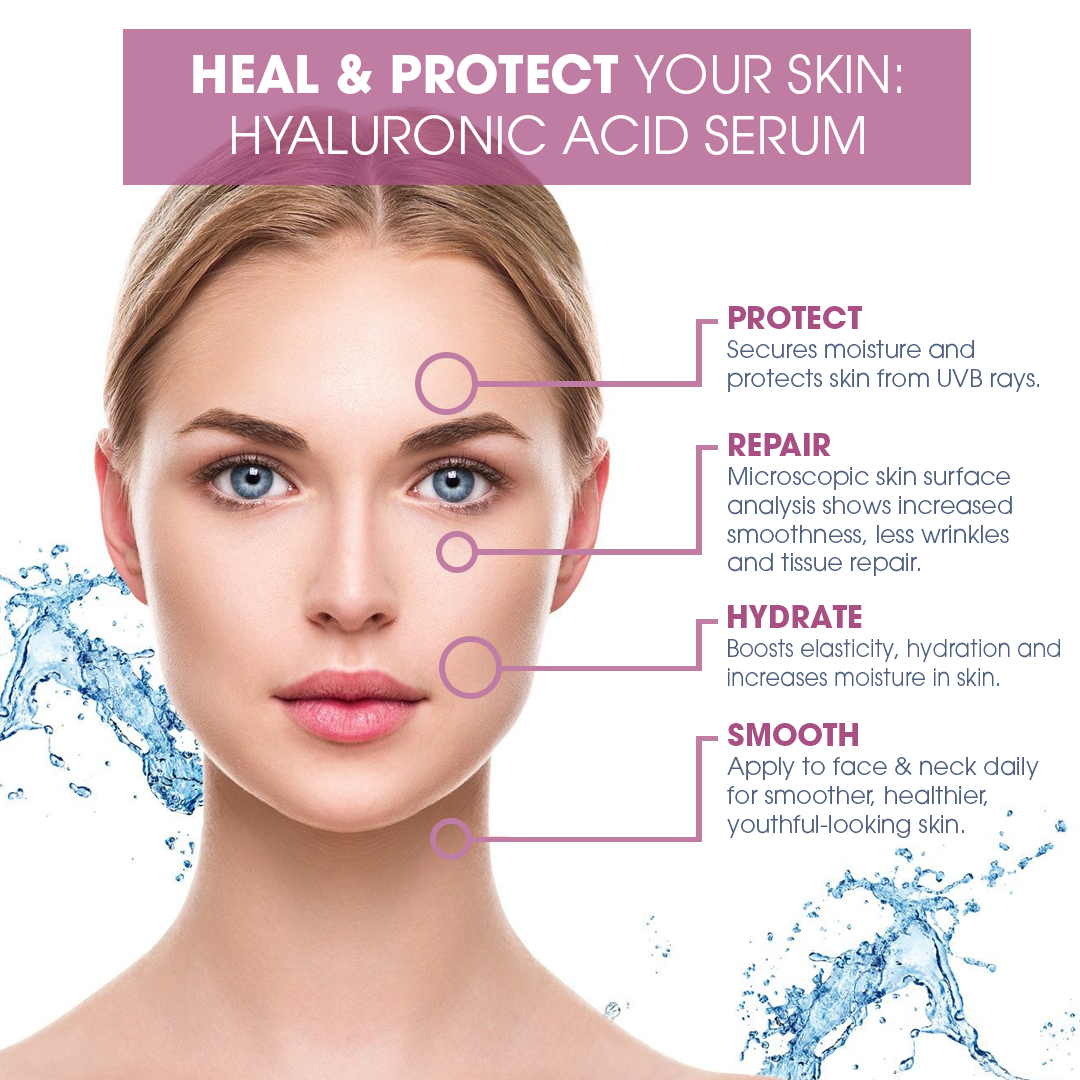
Hyaluronic Acid – Hydration Booster and So Much More
Share
Hyaluronic Acid and Skincare
We have all been hearing a lot more about Hyaluronic Acid (HA) in recent years, but HA is not just a trend, it is one of the best skin care ingredients you can use
Hyaluronic acid is well known for its skin benefits, especially alleviating dry skin, reducing the appearance of fine lines and wrinkles, and speeding up wound healing. It works continuously by replenishing skin to enhance a healthy, supple look and feel.
What Is Hyaluronic Acid?
Hyaluronic acid is a glycosaminoglycan, which is a vital naturally-occurring substance that is part of skin’s youth-supporting matrix. As the chief glycosaminoglycan in skin, hyaluronic acid works to keep every aspect of skin stable, safeguarded, and constantly renewed.
How Does Hyaluronic Acid Work with My Skin?
Hyaluronic acid attracts and binds to water molecules and increases the water content of the skin, it can absorb more than 1,000 times its weight in water, classifying it as a humectant. Humectants are hygroscopic, meaning they draw moisture from their surroundings. Humectants are often found in water-based moisturizers, serums, and other leave-on skin care products because of their ability to help boost hydration for all skin types, which is especially beneficial for dry, dehydrated skin.

HA helps to bind water to collagen, trapping it in the skin, so that skin can appear plumper, dewier, and more hydrated. Maybe most importantly, HA supports collagen in our dermis forming the structure of the skin. Natural Hyaluronic Acid is bound to collagen on one side and links to water molecules on the other, giving skin its plumpness.
As we age, we lose collagen and HA naturally, so the skin becomes dehydrated more easily. Also, harsh weather, heat in the summer, cold during the winter, certain skin-care products, and underlying skin conditions can cause tiny breaks in the protective skin barrier, allowing water to escape. Hyaluronic Acid helps to repair and prevent TEWL (trans-epidermal water loss).
Hyaluronic acid has also been classified as a postbiotic, which is an ingredient that naturally occurs as probiotics found in skin's microbiome break down. It is believed that this synergy with skin is another reason application of hyaluronic acid leads to healthier, younger-looking skin: it strengthens and helps rebuild the unique microbiome on your skin.
Hyaluronic Acid – AKA…
There are three types of hyaluronic acid:
- Hydrolyzed Hyaluronic Acid is hyaluronic acid that has been broken down into elements small enough to penetrate the skin. It’s moisturizing, but not the most moisturizing option, so it’s best for people who have oily or combination skin, since these skin types want to avoid over-moisturizing.
- Sodium Hyaluronate goes deeper into the skin and delivers even better results, though the effects aren’t very long lasting. Sodium hyaluronate is best for people who have normal skin, because it will allow moisture to seep in, but you don’t really need a heavy-duty, long-lasting effect. This is the ingredient you will likely find in serums.
- Sodium Acetylated Hyaluronate has the benefits of sodium hyaluronate but with longer-lasting results. It’s best for people who need moisture, such as those with dry skin, those who live in dry climates, or those looking for a product for the dry winter months.
Hyaluronic acid plays well with most other ingredients and can be paired with peels, retinols, vitamins, and other acids. Check out the GLOWBIOTICS products that contain Hyaluronic Acid and discover the benefits of instant hydration, plumping of wrinkles and repair they offer the skin.
- Probiotic Hydraglow Cream Oil
- Soothing Revitalizing Eye Cream
- Advanced Vitamin C Brightening Serum
- Calming Restorative Treatment
- Anti-wrinkle Illuminating Eye Cream
- Probiotic Firming + Replenishing Lotion
- Probiotic Brightening Renewal Cream
- Gentle Probiotic Calming Lotion
- Probiotic Clarifying Lotion
- Probiotic Moisture Rich Replenishing Cream
- Instant Refreshing Gel Hydrator
- Probiotic Ultra Rich Brightening Cream
